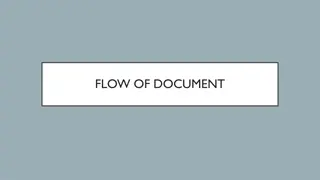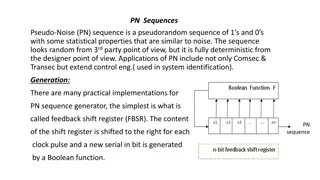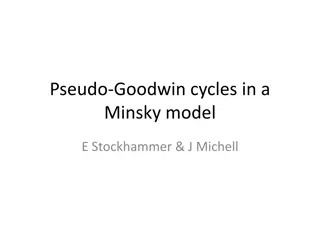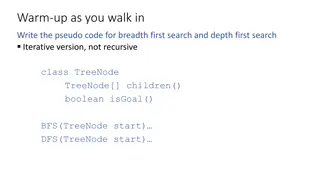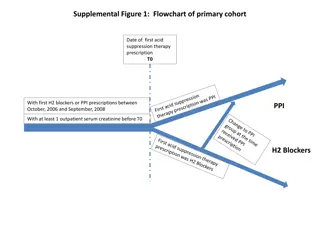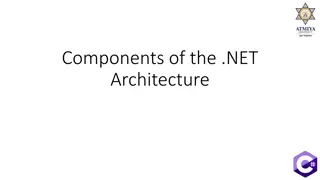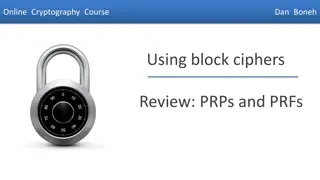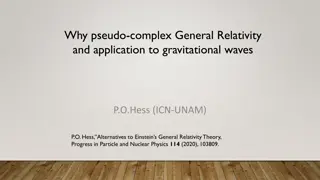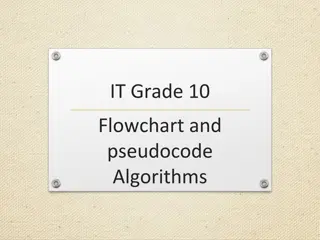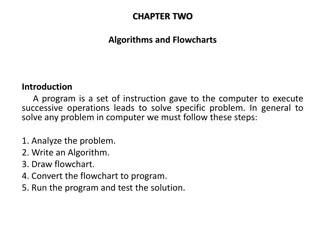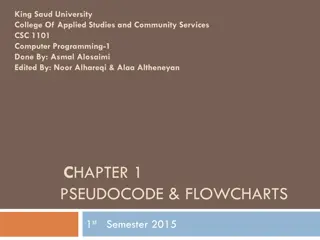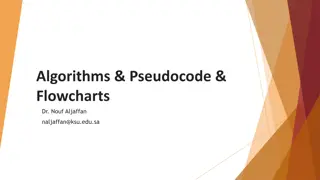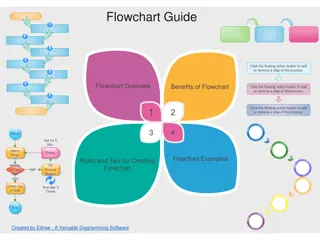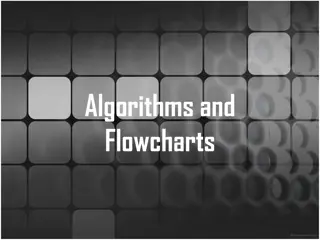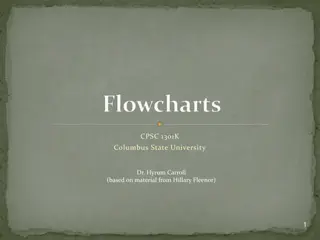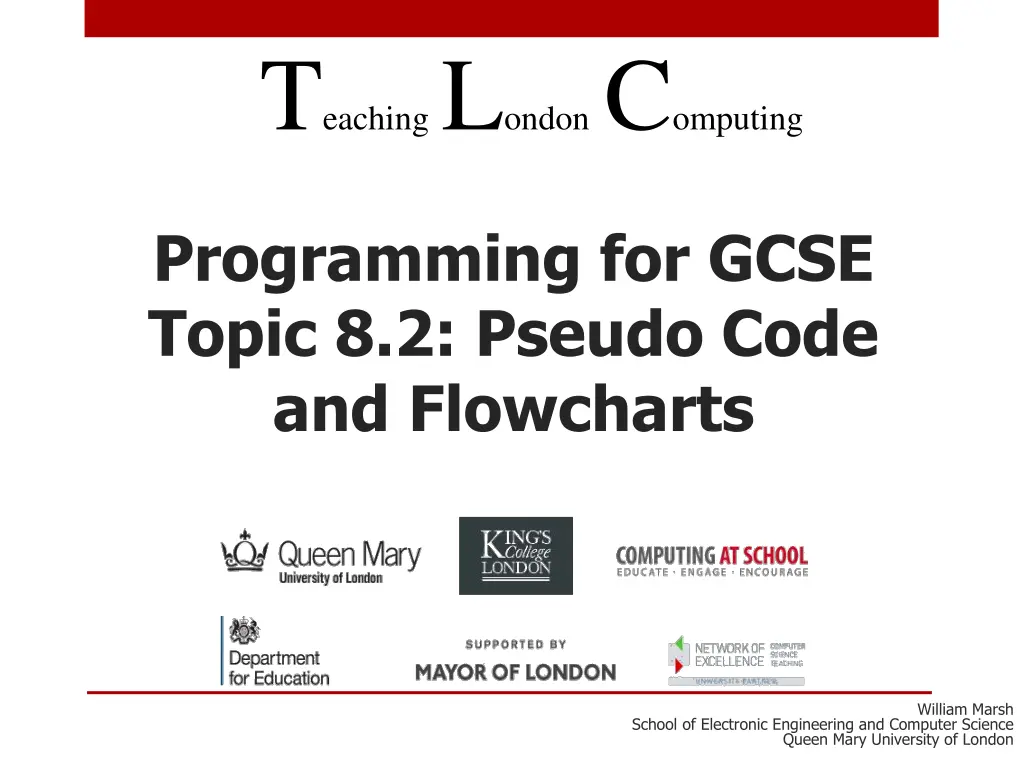
Exploring Pseudo Code and Flowcharts for GCSE Computing Students
Discover the significance of pseudo code and flowcharts in GCSE Computing through in-depth explanations, examples, and practical applications. Learn how to design, plan, and implement software solutions using these essential tools. Dive into the world of algorithms, statement blocks, decision-making processes, and more with structured guidance from experts at Queen Mary University of London.
Download Presentation

Please find below an Image/Link to download the presentation.
The content on the website is provided AS IS for your information and personal use only. It may not be sold, licensed, or shared on other websites without obtaining consent from the author. If you encounter any issues during the download, it is possible that the publisher has removed the file from their server.
You are allowed to download the files provided on this website for personal or commercial use, subject to the condition that they are used lawfully. All files are the property of their respective owners.
The content on the website is provided AS IS for your information and personal use only. It may not be sold, licensed, or shared on other websites without obtaining consent from the author.
E N D
Presentation Transcript
TeachingLondon Computing Programming for GCSE Topic 8.2: Pseudo Code and Flowcharts William Marsh School of Electronic Engineering and Computer Science Queen Mary University of London
Aims Design: what it about? Pseudo code Flowcharts My views
Design Plan Before you build How for s/w? Software is a description! Steps towards a solution
Pseudo Code Careless or informal code Useful for Making a start Breaking a problem done (i.e. design) Algorithms without code AQA has defined a syntax Does this miss the point?
Example: Shopping List initialise shopping list and list of purchase forever get command if command is 'add' get item and add it to shopping list if command is 'buy' get item; transfer from shopping to purchase list if command is 'print' print both lists
Statement Block Group of instructions No jumps Comments! Arrows implicit downwards across description
Decision Choice of two If statement false true
Example Largest Value start Input two numbers Output largest input X, Y true X > Y false print X print Y stop
Quiz Flowchart for A Loop Pseudo code Equivalent flowchart While condition statement 1 statement 2 false ? Condition true Statement 1 Statement 2
Specification Algorithms Candidates should be able to: (a) understand algorithms (written in pseudocode or flow diagram), explain what they do, and correct or complete them (b) produce algorithms in pseudocode or flow diagrams to solve problems. Also relevant to design in the practical programming activity
Summary Flowcharts may be useful for understanding programs Pseudo code like code without the syntax errors

